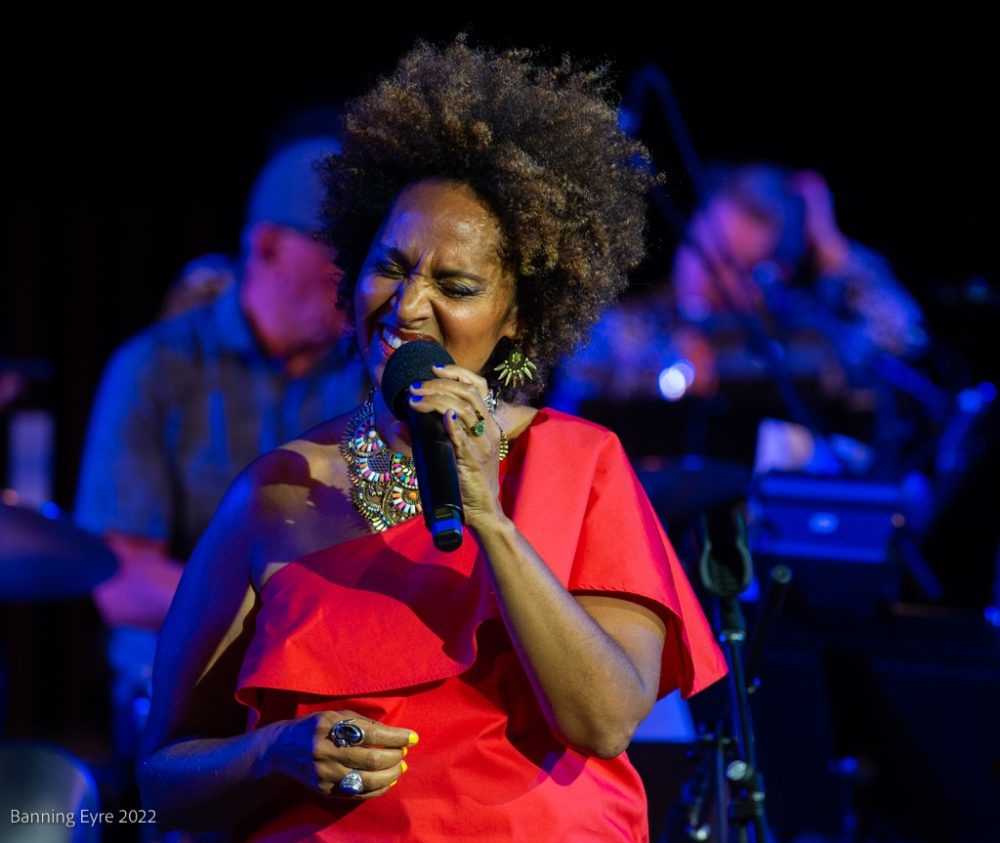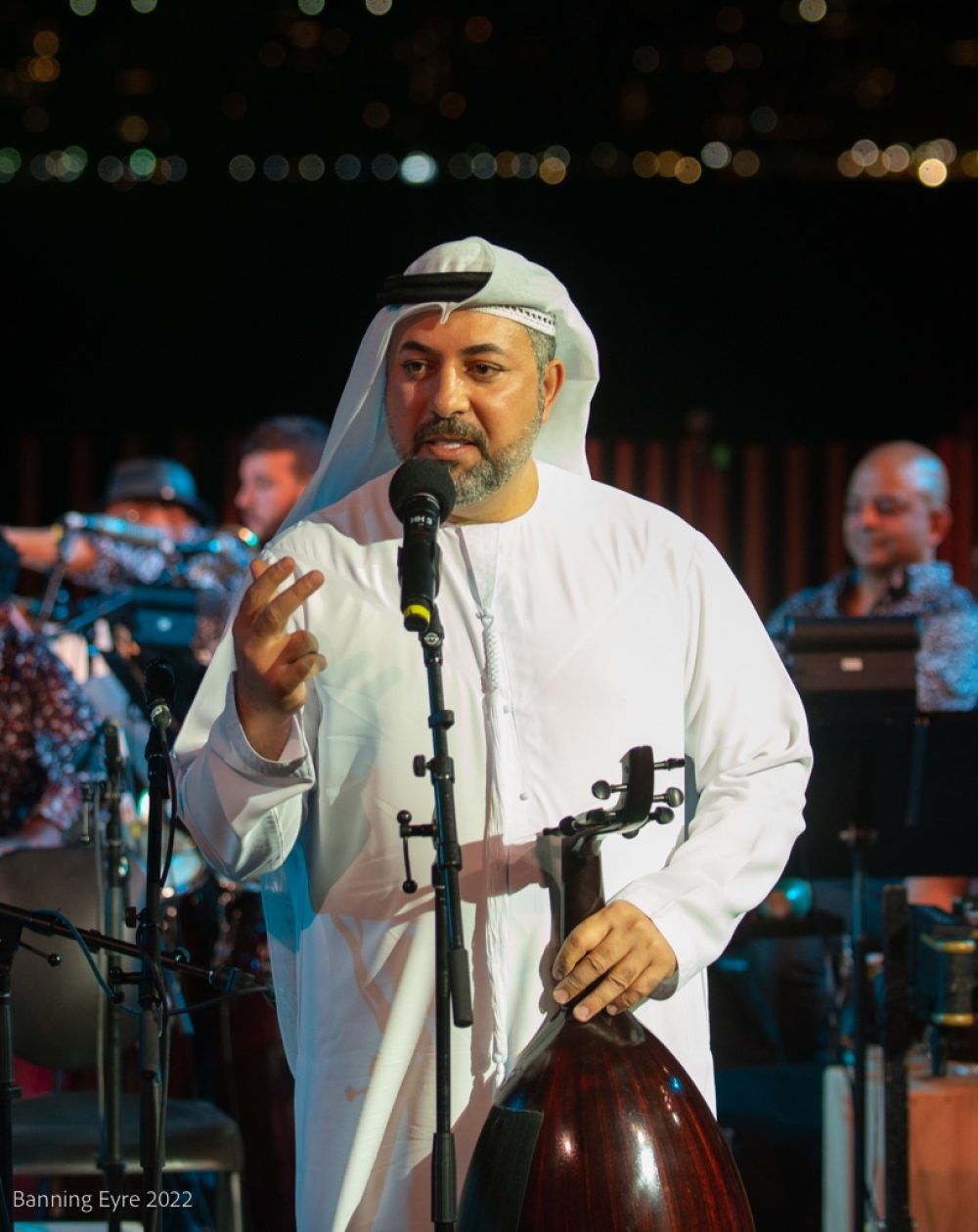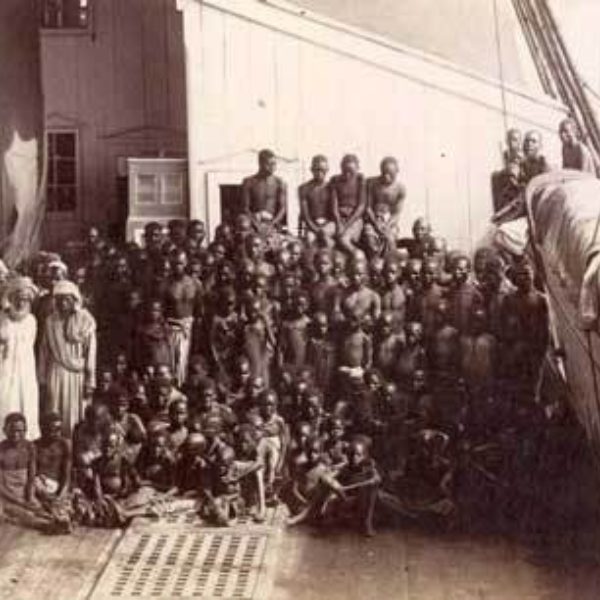The word “Khaleeji” means literally “the gulf,” but not just any gulf. We’re talking of the waters that separate the Arab states of Kuwait, Bahrain, Qatar and the United Arab Emirates from the much larger nation of Iran. For just that reason, some call it the Persian Gulf, and others, controversially, the Arabian Gulf. We discovered that back in 2007 when we produced our Hip Deep program: Africans in the Arabian (Persian) Gulf.
On that program, we spoke of khaleeji as a genre of music, but the story is more complex than that. Khaleeji music is a large category, spanning everything from the unique rhythms of the region’s pearl divers to highly produced pop music by star singers like Mohammed Abdu. The reason this story landed on Afropop Worldwide is that khaleeji music carries vestigial African influences, owing to the many Africans brought to the region as captives in past centuries, and subsequently deeply intermarried into the general population.
That history, in part, informs an unusual collaboration between Arturo O'Farill’s New York-based Afro Latin Jazz Orchestra and an ensemble of musicians from Gulf states and North Africa. In a nutshell, this project is a recognition of the Arab culture that swept through North Africa and into Spain and Portugal in the Middle Ages, just before the Spanish exploration of the New World that resulted in today’s Spanish Caribbean culture and music. If you widen your lens far enough, it’s all one connected story.
This might seem like a stretch, but in his work curating and presenting for The Arts Center at NYU Abu Dhabi, Bill Bragin became intrigued by it. Bragin invited Arturo O'Farill to visit the area in 2018, and he too became fascinated when he encountered Gulf musicians. Both men were also inspired by the opening chapter of Ned Sublette’s now-classic 2004 book Cuba and Its Music, which lays out the deep African and Arab history that predates Cuban music.
Long story short, the Cuban Khaleeji Project arrived in New York City this August with three sunset shows at Little Island, poking out into the Hudson River on the city’s West Side. The concert brought together O'Farill’s 17-piece orchestra with Ghazi Faisal Al-Mulaifi and Boom.Diwan (Kuwait/UAE), Yazz Ahmed (U.K./Bahrain), Malika Zarra (France/Morocco) and Ali Obaid (UAE). The result was a fascinating fusion of rhythms and melodies, mostly khaleeji music arranged and interpreted through the fertile imaginations of O'Farill, his collaborators and his powerhouse band.
The show was spectacular, with O’Farill and his 17 musicians leaning hard into the khaleeji rhythms as the others took turns as featured artist. Ali Obaid’s oud melodies blended seamlessly into the orchestration, bursting forth at times for exquisite solos. Yazz Ahmed played trumpet and fluegelhorn through cosmic echo processing creating a gorgeous ambiance before launching into her own compositions. Malika Zarra, clearly a longtime collaborator with O’Farill, enjoyed the most playful interactions with him and showcased an impressive range of styles and vocal textures. The deepest music came with Al Mulaifi and the four percussionists of Boom.Diwan, showcasing pearl diving rhythms and melodies, and meshing with O’Farill’s Afro-Latin percussionists, all clearly enjoying themselves. All the artists came together for a spirited finale.
Before the show, Afropop’s Banning Eyre sat down with O'Farill to get some background on this one-of-a-kind project. Here’s their conversation. (All photos by Banning Eyre.)

Banning Eyre: Arturo, thanks for taking time to speak with me.
Arturo O'Farill: What a privilege. Afropop. Are you kidding me? That's the center of the world, man. There's a book called Secular Devotion. Do you know that book?
I have heard of it.
It talks about the great, great rhythms of the world that we all love and admire—jazz, hip-hop, salsa—that they're all born of African sacred rhythms. I totally believe that, so every time you turn on the radio, you're giving thanks.
I like that. We always say that music is encoded history and if you tease it apart, you can understand why the world is the way it is. And it all leads back to Africa.
You better believe it, as does history, the first appearance of man. So it makes total sense to me. I still haven't made the pilgrimage. I've been to Africa, but I haven't been to Senegal and places like that. I've been to South Africa and Kenya. But to really follow that pilgrimage I have to make it still.
I lived in Mali in the ’90s studying guitar, griot guitar. And that changed my life.
Beautiful. I bet you know Mark LeVine.
Absolutely. We've worked on a number of Afropop projects together, and we now have a documentary in the works.
He has promised to get me to the promised land. I'm counting on that. He’s a fascinating human being, and a sweet person.
That he is. So how did you get involved with this project?
I was reading Ned Sublette’s book, Cuba and Its Music. It never really gets to the modern history.
Yes. We are all still waiting for volume two.
Right. It’s just part one. But the first couple of hundred pages are about this incredible nexus that I never really thought about, which is that Spain, northern Africa and the Middle East are all part of this trade route, slavery and spices and all kinds of stuff. So there's a lot of what he very carefully calls Arabic and Spanish musical practice in northern and western Africa. And I never realized that. And then things started clicking, the idea of the vihuela, the oud, the guitar—the idea of call and response. So I said, "I've got it do something about this. I've got to discover this."
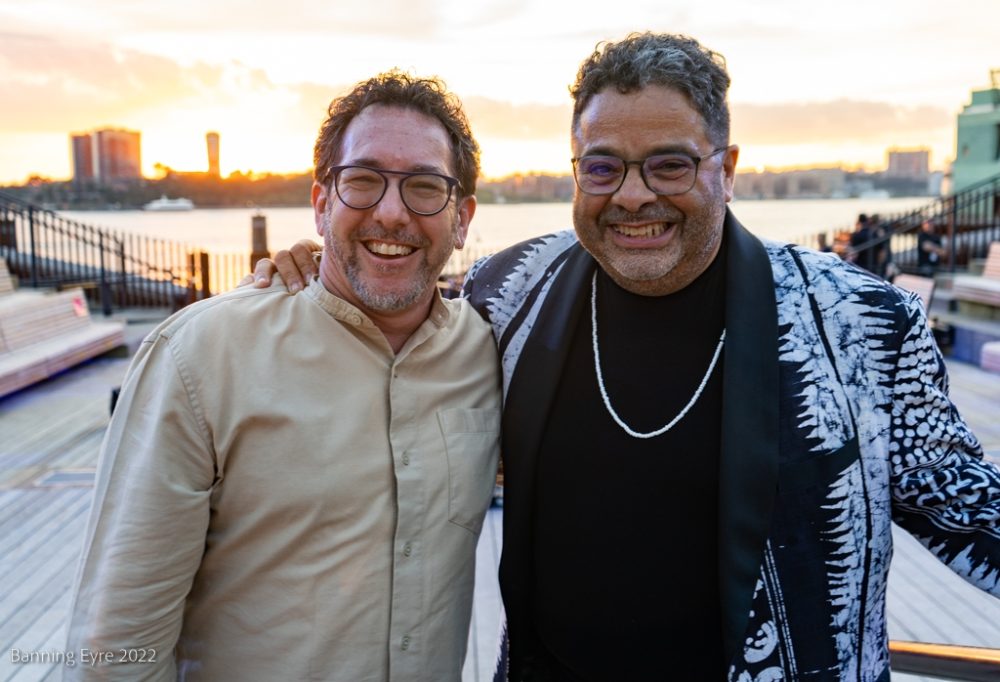
I mentioned this to Bill Bragin and Eric Taller, our director of programming and production at the Afro-Latin Jazz Alliance. I said this was something deeply interesting to me and Bill invited me to propose a project for the NYU Abu Dhabi Arts Center called “Cuba Meets Khaleeji, The Middle Eastern roots of Afro Latin jazz.” He invited me on a fact-finding mission. I went over to Kuwait and I met Ghazi al-Mulaifi and Boom.Diwan. And I'll be damned if these pearl diving percussion masters did not remind me of guaguanco, and remind me of all the beautiful traditional call-and-response type practices that are found throughout Africa and Latin America.
I will tell you a funny story because it's worth telling. I met Ghazi in his apartment and I met the guys of the band Boom.Diwan. Bill introduced me. He said, "This is Arturo O'Farill. He wants to do these concerts and explore these things. And I'll let him tell you about it."
So I got up and said that the source of all this was Africa and the drum. That's where we all come from. And the biggest Boom.Diwan guy looked at me and said, "Funny. You don't look African."
That is funny. Well, a lot of khaleeji folks with African roots don’t look all that African either.
Anyway, I said, “O.K., Teach me some of your rhythms." So they began to teach me some of their pearl diving Kuwaiti rhythms and I was able to cop them, which surprised them. "How you know that? How did you learn that?"
So I said, "Wait, wait, I'm going to teach you mambo rhythm." And so all of a sudden they are playing mambo and I'm at the piano, jamming on the montuno with them. And then something clicked in my mind. I looked and saw they were all on the floor, squatting. They are on the floor playing their instruments and I am on a piano bench playing this European instrument. I thought, "Wait a second. Something is not right here." So I asked Ghazi if I could borrow his son’s toy piano, which is going to make an appearance later, by the way. It's a little toy red piano that was in the corner. So I said, “Let me borrow your little toy red piano.” So Ghazi brought the toy piano over to me, and I squatted on the floor with them, and as soon as that happened, all hell broke loose. The jam was elevated hundredfold.
It just became spontaneous and beautiful and the room filled with laughter and love. And at the end of it, the guy who first doubted my sincerity, looked at me and said, "You're black, but you're white. But you’re black, but you're white."
I looked at him and said, "It's just a shell, man. Just a shell." But it was just funny to me.
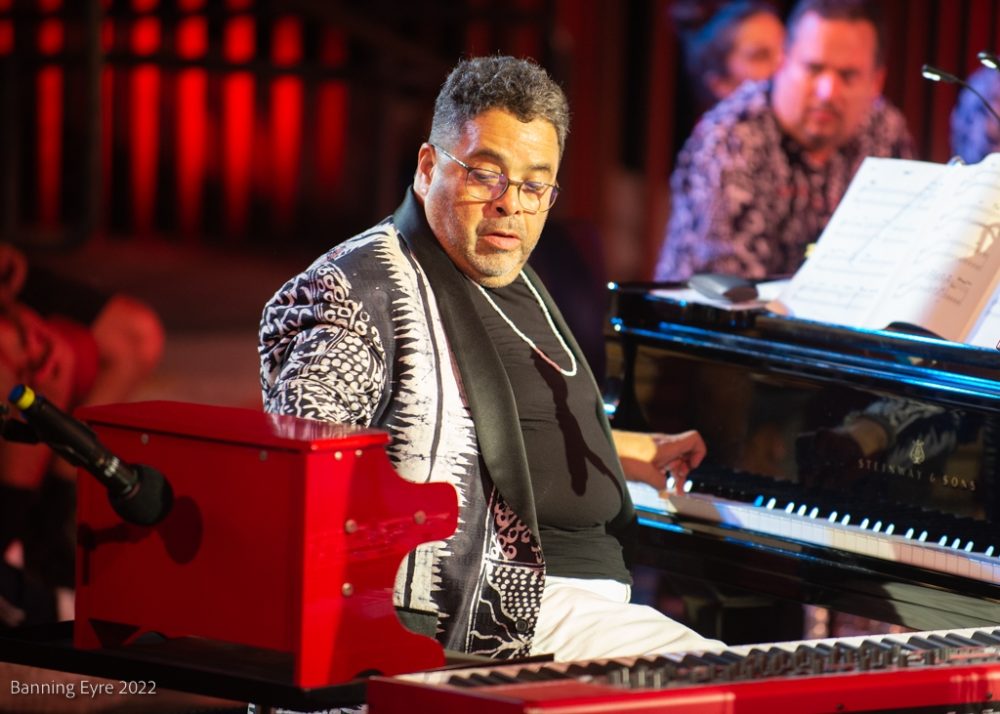
How long ago was this?
This was probably three or four years ago. And then another miraculous thing happened that affirmed so much of what we were doing. We were in Abu Dhabi rehearsing and Boom.Diwan was on one side of the room and my percussionists were on the other side of the room. All of a sudden Boom.Diwan started playing and one of my percussionists looked at me and said, "They are playing bomba y plena, Puerto Rican rhythms!”
So they wandered over and started having a great jam session and it was everything that you just said about the history of the world being encoded in music, about music being the ultimate migratory force, the real migratory force that shapes culture. So for me to be able to see this up close? I could die tomorrow. I'm good. Because I know that the music that lives inside of me is part of a much larger global reality, and even though politicians and nation states can't figure it out, we know the truth, and the truth is that our DNA is culture, it's music, it's dress, and we are that global people.
Then bringing the Moroccan oud player Ali Obeid and Yazz Ahmed and Malika Zarra with Boom.Diwan all together on this stage, in this magic space is incredible. It's mind-blowing to me that we have gotten to the point where we can make this statement.
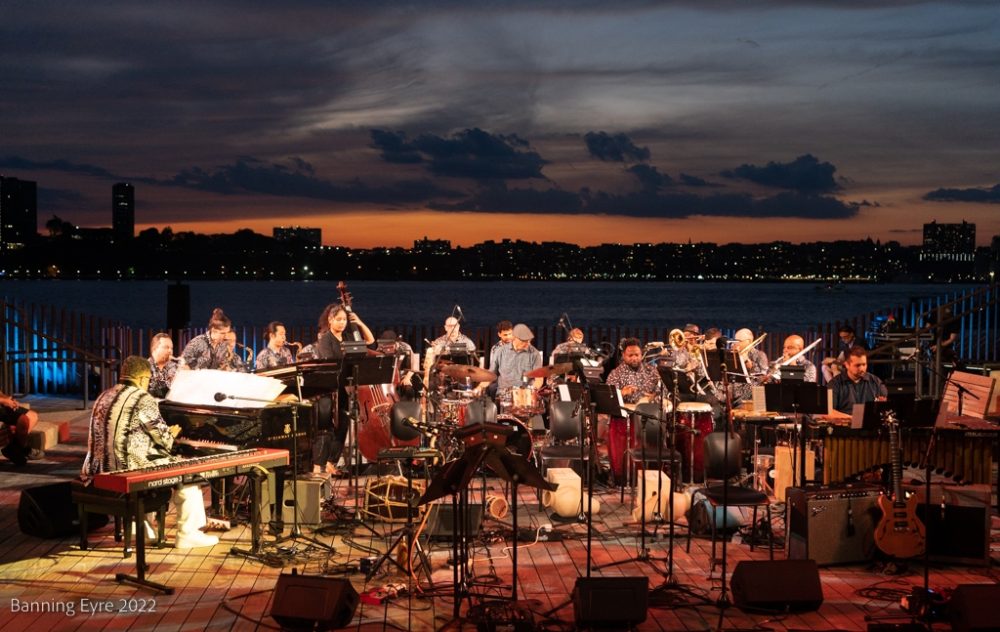
This is so interesting. You know when we started our Hip Deep series, with Ned Sublette back in about 2002, one of the first subjects we took on was the musical legacy of Al Andalus, Moorish medieval Spain and its ramifications. It’s a key part of the history behind your project. For me, working on those programs really rearranged the way I think about music. That movement from the Middle East into North Africa into Europe and then back again and then across to the New World. It was a whole different narrative about how our music became the way it is. Back then, one of the ideas that we talked about but never actually executed was to bring together Middle Eastern and Latin percussionists and get them to discuss and play together. But here you are doing it.
It's so much fun. When we were rehearsing the smaller group stuff for Sunday's show, at some point, all decorum left the room and we were not musicians anymore. It was just pure rhythm. It's just amazing to watch Boom.Diwan and Cuba and Puerto Rico and just all that information freely flowing between the players. It was precious. I'll never forget it. It's funny because the brass band that wasn't even part of that rehearsal was just in awe. At a certain point, you just realize something very deep and powerful is going on.
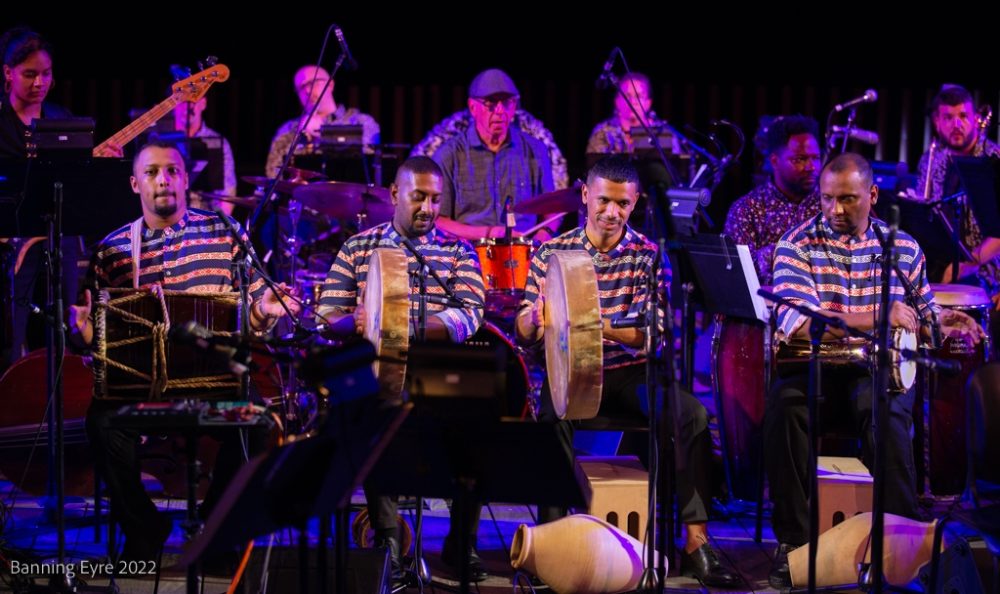
For folks who don't know, what is Khaleeji?
Khaleeji is a part of the world that is known as the Persian Gulf and that has its roots in Persia. The khaleeji people are the people of that region. That's what I know it to be. And for me, to actually go there and see these people and the beauty of Kuwait and Dubai and Abu Dhabi. And to visit these people in their environment, and to actually experience the desert, to sit in a house with an Emirati, in a tent in the middle of the desert—this is khaleeji to me.
And by the way, these are also incredibly gracious and hospitable human beings who really redefine what it means to invite a stranger into their home. When I first met Ghazi, it was like love at first sight. He invited me in with his family. I know his parents. I know his children, his wife. So I don't know any strict definition of khaleeji but to me it means hospitality and graciousness.
That's lovely. I approached it as a music genre when we produced our show on the Gulf. But clearly that’s just part of it.
Well, there are khaleeji rhythms. I just know a few of them.
Yes, the rhythms. When I started listening to khaleeji pop music, and I asked myself how it was different than other Middle Eastern pop, and one thing I noticed was a lot of 12/8 rhythm, which to me seemed like an echo of Africa.
Yes. Absolutely. A lot of 12, and a lot of 12-measure groupings as well. And if you Google khaleeji, you find a lot of different genres, khaleeji pop, khaleeji rap, khaleeji traditional… All kinds of music that go under the guise of khaleeji. There are many, many rhythms, and many, many drums. It's really fun to watch Boom.Diwan because they have a whole set of drums for this rhythm and that rhythm. And they switch drums. They have big ones, they have pandeira-like ones. They have all kinds of double-sided drums, and in fact with the double-sided drums, there was a pattern that the musicians played that just reminded me of the double-headed drum in merengue music. It's a combination of stick and hand that they do that's really interesting.
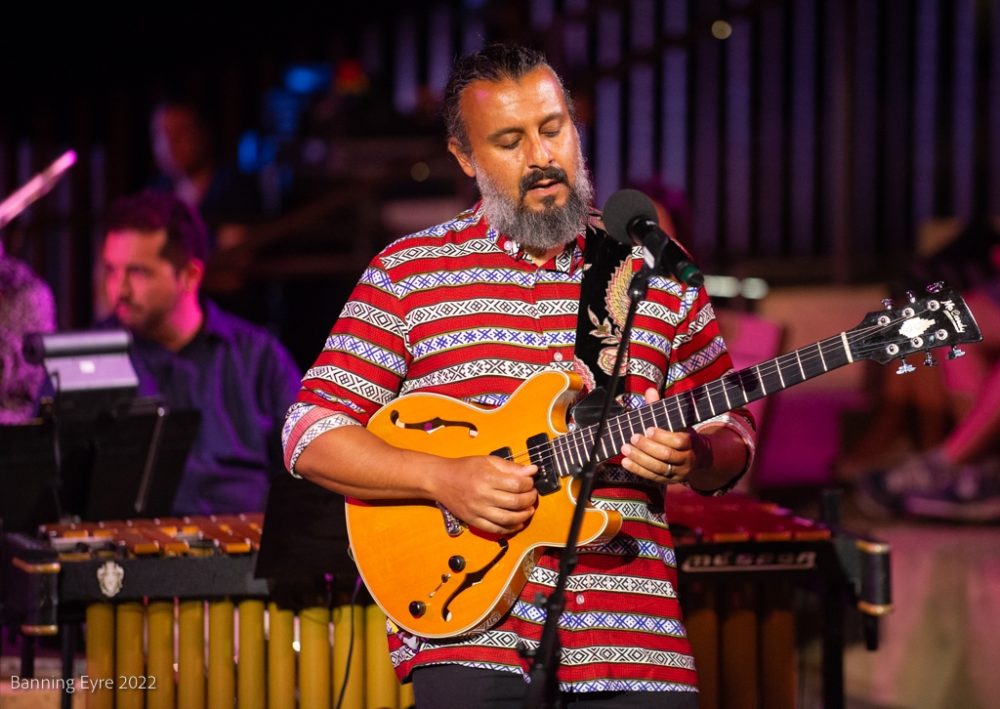
So with this experience, you are in a good position to talk about these rhythms. Obviously it all goes back to Africa, but through different routes. As I understand it, the way Africans came to the Gulf was quite different from the Atlantic story. The enslaved Africans became attached to family households, rather than being collected on plantations. And the result is that the African population intermarried and blended into the general society, rather than remaining as a separate group. And of course that affects the way the music unfolds.
The beautiful thing is that you look at the faces of people in that part of the world and you see Africa, you see Europe, you see the Middle East, you see Turkey, you see the Far East, you see Asia. It's just beautiful and it reminds me a lot of Cuba. Because sometimes you can walk around Cuba and look at people and think, "What are you?” And the person will look at you and say, "part Chinese." And it's just such a beautiful thing. Especially now when I just cannot believe what's going on in this nation. The Christian nationalists, the isolationists, the hatred is just so, so heartbreaking. And for us at this advanced stage in history to still be doing that. I look at that, and I realized that the Americans are such a failure in some way. The continent was advanced only through the indigenous people.
To me, the most American thing you can do is to question America, question who we are and how we got to be here. Somebody might hate me for that, but I believe that the most American thing you can do is to be self-critical. How did we get to this? When you live in a city where apartments go for 65 million, 50 million, 30 million, and you have people living on the streets, you know there's been a cataclysmic failure of epic proportions. People who have no homes are living in the subways or underneath freeways or living in cars, even if they have full-time work. In some ways, it is a direct result of our inability to comprehend the intermingling of our bloods. It's just a terrifying moment in history.
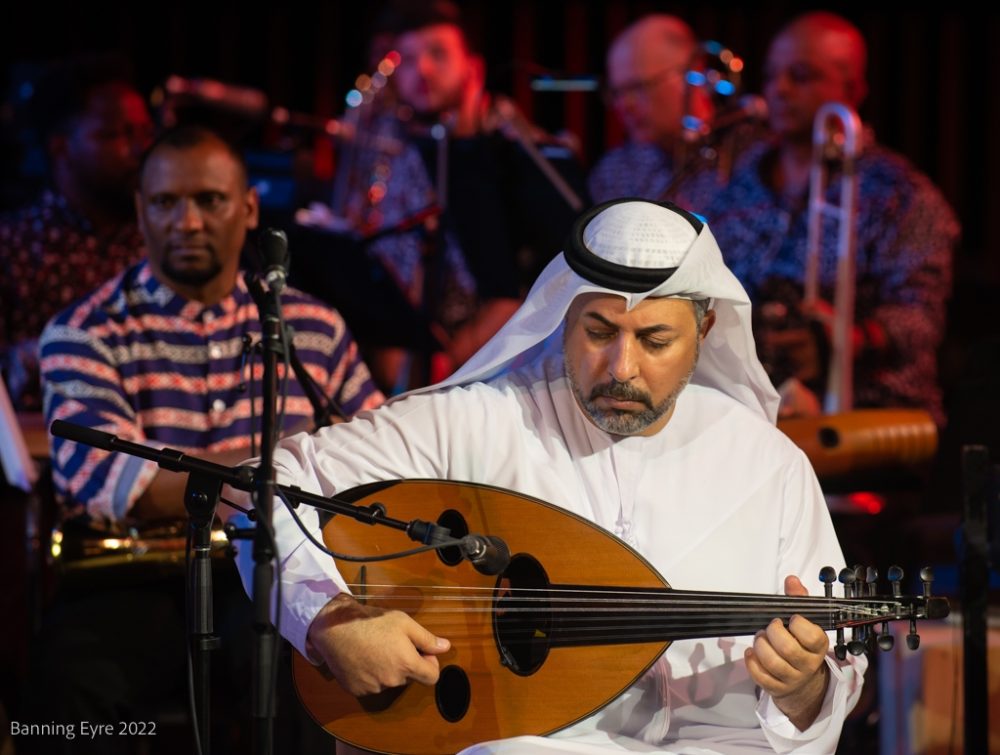
It truly is. Coming back to these rhythms, you talked about a feeling of familiarity when you heard the Gulf rhythms, and they felt it too. But I'm curious about the areas where you may have experienced differences, things that they have that don't feel so familiar. I'm imagining that there are things on both sides that are unique to those locations. What was your experience of that?
There are moments. It's not clave-centered. It's not really even about having clave or not. None of that really bears witness to what’s different. What is really different is a kind of a different circular organization pattern. If you look at the kente cloth pattern of making music. Cultures have different ways of layering or striating rhythms. So in a way, the khaleeji rhythms that I see have very specific striations. They are not necessarily African in nature, which is much more layered. Kente cloth is layering. This is more striating in a way. That's my naïve take on what's really different.
When we study, for instance, guaguanco, we understand the patterns interlock like this. [He intertwines his fingers on both hands.] And in a way when you hear khaleeji music, it is also interlocked in a similar fashion, but to me it's much more striated, much more individualized. Each layer of the rhythm is a much more specific thing. For instance, you look at the clay pot rhythm, that's a very specific thing, a very powerful and dynamic statement. And when you look at the little cup going “diggi diggi diggi diggi…” That is so unlike Cuban percussion practice or Latin percussion practice. To me these are much bolder patterns, whereas Afro-Cuban music tends to flow in and out of both patterns a lot more easily. So in a way the difficulty is for us to free up, for us to really look at a different way of approaching layered rhythms that isn't quite as site-specific.
We tend to play rhythms in a very loose manner, but within the rules. I think that’s been the difficult thing for the percussionists in Boom.Diwan has been to ease into that, to ease into that fact that we aren’t as site-specific as they are.

I think of the clave as being a timeline and everything hangs around that. But there is a common rhythm in Middle Eastern music that's kind of like clave in that it has two parts –1 2 . 4 5 . 7 .—like a kind of built in call-and-response, not unlike 2-3 and 3-2 versions of clave. There are lots of different names for variations on that rhythm, but it's quite ubiquitous in the Middle East.
That doesn't surprise me at all. But for me the whole 2-3 and 3-2 is a reduction of what's really going on, which is music that breathes and has tension and release. You have a pulse, and clave is either on it or off it. Tension, release, tension, release. That to me is what governs all good drama, all good life, yin and yang, tension and release, breathe in, breathe out. And again, I think this idea of reducing that into music is beautiful.
I'm a classically trained musician. I got my degree in classical music. But I think that idea of breathing should also be part of everybody's musical training. If you're playing Chopin, you should breathe. If you're playing Beethoven, you should breathe through your music. There should be that sense of tension and release in everything that you do. As far as analyzing khaleeji rhythms, I am an infant in this. Kick my ass. Teach me tricks. I don't know anything. I could go on studying music for years.
I don't know that much about those rhythms either, but it is fascinating.
What I love about all of this, this conversation, and this project is that it's all about organization and randomness. That's what music is: organized chaos. And the beauty of it is when you kind of understand that the world and universe is a chaotic bitch. Music makers are just trying to organize their way out of the mess. And it's a beautiful thing, because we have a closer relationship with the truth of chaos than the average human being. Music is such a joy to me still. I've been doing this for years, and I'm still in love with this thing.

It shows. What was it like creating compositions for this project? How did that work?
All the compositions were already created. This is not a new project. Everybody came with their book. And so what was created, and in a sense what was commissioned, was the meeting of these two cultures, just combining Ali’s compositions, for example, with the sounds that we are used to in Afro-Cuban music. It's been kind of a delight to watch Osama Ismael, his musical director, experience this transformation of khaleeji music into mambo, and to watch our music, what we play, turn into khaleeji rhythms, or the chaabi rhythms of Morocco.
So each composer brings compositions, and then the challenge is to arrange them for the larger ensemble.
Yes. For instance, I sat with Ali Obeid and he played for me this piece “First Love,” and I sent it out to our composer/arranger people to kind of structure it, and then he gave it back to Osama who cleaned it up into real khaleeji music. It's been a process. Playing other people's music is always beautiful, I think. I've been doing this for a long time with all kinds of things. I invite people into our platform to destroy what we think we know.
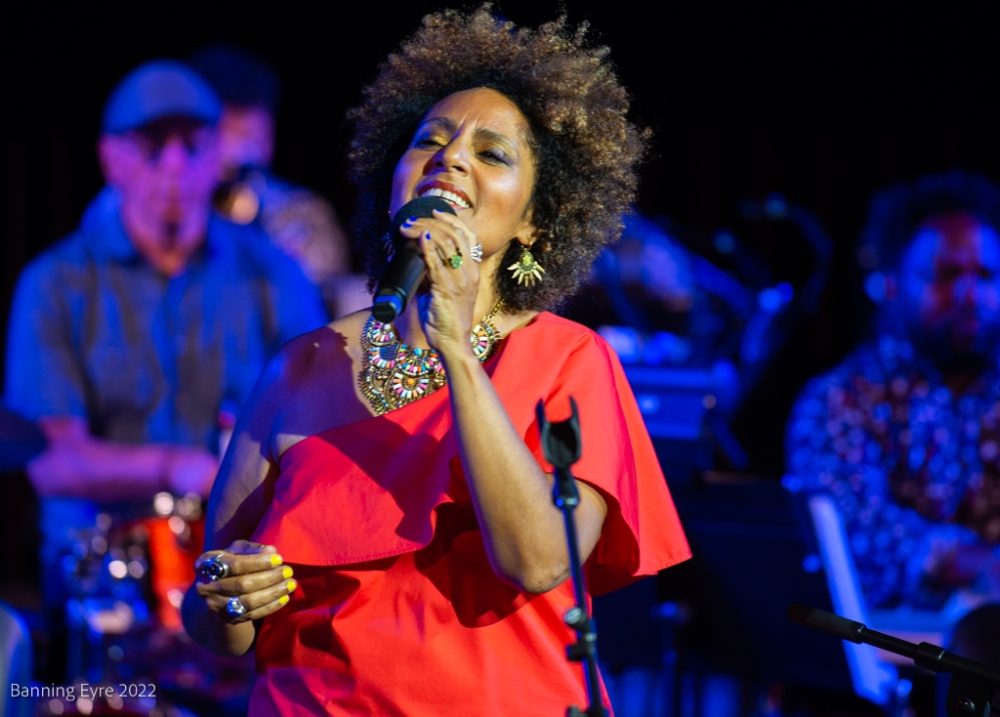
I love the show that you did with Lionel Loueke, the jazz guitarist from Benin.
That was one of my favorite shows. We did it with the Afrobeat of the family Kuti, and with Wunmi and Lionel Loueke. Lionel is one of these freaks of nature who just walks in music.
I've listened to his music quite a lot, but I heard a whole different side of it in that show with you.
I’m nuts, man. I just call people up and say, "Hey, will you play with us?" The list of people that I've worked with, who I’ve asked to come and kick my ass is long. Vijay Iyer and all kinds of people. It’s beautiful and that's how it should be. This thing we wrongly call jazz is just part of humanity. It's not something to be warehoused in institutions.
You have done so many these projects. Is there any chance this one will result in a recording?
I think that's going to happen. I can't say for sure. But we are recording tonight and tomorrow. I would love to go into the studio. We were talking a little bit about bringing the salt back to the Persian Gulf and maybe going to a studio there. That would be tremendous. But a live recording would not be bad either.
Indeed. Well, I sure hope that happens. Thanks so much for talking with me.
I'm still waiting until we make music with extraterrestrials. It's going to happen, if we don't kill ourselves as a species, we’re going to be making music with extraterrestrials. They're going to look at us and say, "You guys are so behind. 12/8? Let me teach you about 26/39.”
And they’ll make it groove too.
Hey, man, such a pleasure. Thank you for your invitation to come and chat.

